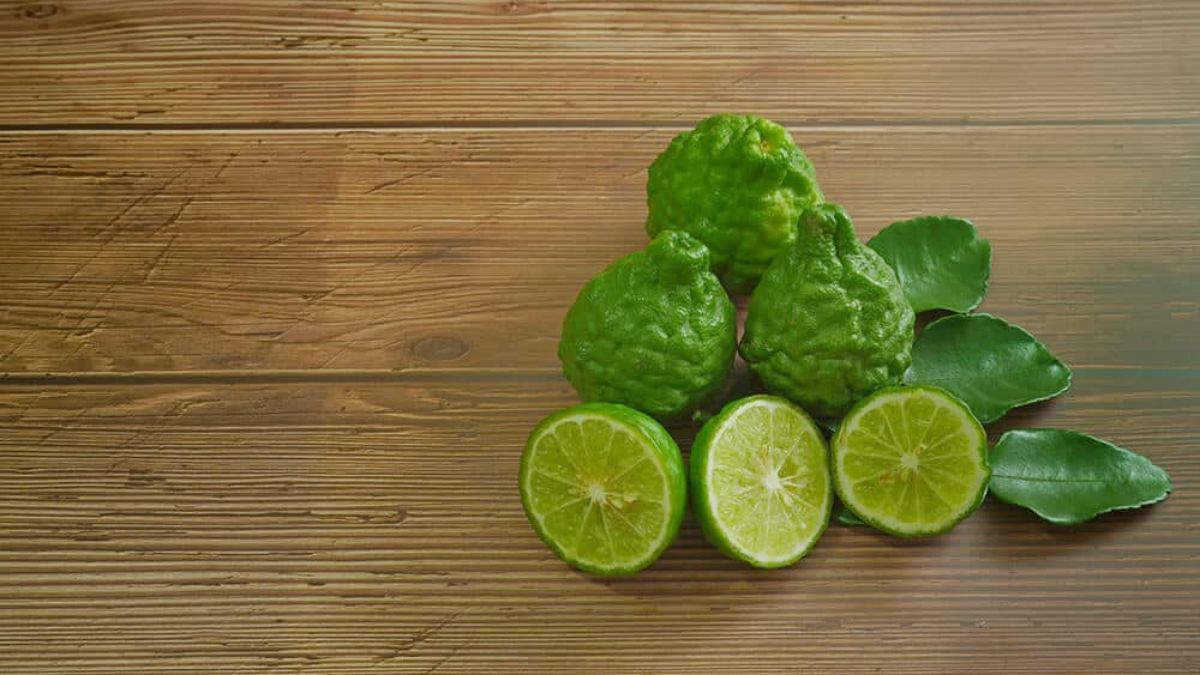Kaffir lime is more than just a unique fruit; it’s a gateway to vibrant flavors and rich traditions that span across cultures. With its distinctive bumpy skin and aromatic leaves, this tropical gem holds a special place in the heart of many cuisines, particularly in Southeast Asia. But what makes kaffir lime truly captivating goes beyond its culinary flair—it tells stories of ancient practices and health benefits that have stood the test of time.
As we peel back the layers of this extraordinary fruit, we’ll explore not only its historical roots but also how it can enhance your cooking, boost your well-being, and fit seamlessly into sustainable living practices. Whether you’re an adventurous home cook or simply curious about new ingredients to incorporate into your life, join us on this flavorful journey as we unlock the secrets of kaffir lime.
The History and Cultural Significance of Kaffir Lime
Kaffir lime, known as “makrut” in many Southeast Asian cultures, has deep roots within traditional practices. Believed to have originated in the region centuries ago, it plays a starring role in various cuisines and rituals.
In Thai culture, kaffir lime leaves are essential for creating aromatic dishes like tom yum soup and green curry. The zest of the fruit is revered for its intense fragrance that enriches culinary experiences.
Beyond the kitchen, this vibrant citrus holds cultural significance. Its leaves are often used in religious ceremonies and offerings due to their refreshing scent believed to ward off negative energy.
The tree itself symbolizes resilience; it thrives even in less-than-ideal conditions. For many communities, growing kaffir lime represents a connection to heritage and ancestral wisdom passed down through generations. This fruit embodies more than flavor; it encapsulates history and tradition deeply rooted in everyday life.
Health Benefits and Uses of Kaffir Lime
Kaffir lime is more than just a flavorful ingredient; it boasts an array of health benefits. The leaves and fruit are rich in antioxidants, which help combat oxidative stress in the body.
The zest contains essential oils that may aid digestion. Many cultures use kaffir lime to alleviate stomach discomfort and enhance appetite. Its antibacterial properties can also support oral health by fighting harmful bacteria.
In aromatherapy, the uplifting scent of kaffir lime promotes relaxation and reduces stress. Incorporating its aroma into your space can create a calming environment.
Additionally, the juice acts as a natural remedy for minor skin irritations due to its soothing qualities. Some even include it in skincare routines to brighten the complexion and reduce oiliness.
Embracing this unique citrus in daily life not only elevates dishes but enriches overall well-being as well.
Culinary Applications and Recipes Featuring Kaffir Lime
Kaffir lime adds a unique zest to various dishes. Its aromatic leaves are a staple in Southeast Asian cuisines, enhancing the flavor of curries and soups.
You can easily infuse your stir-fries with its distinct citrus aroma by tossing in chopped kaffir lime leaves at the end of cooking. This elevates the overall taste profile remarkably.
The fruit itself is perfect for making refreshing drinks or desserts. A simple kaffir lime mojito combines fresh mint, sugar, and soda water for an invigorating twist on a classic cocktail.
For adventurous cooks, try incorporating kaffir lime into marinades or salad dressings. The juice brings brightness to grilled meats and seafood.
Don’t forget about dessert! Kaffir lime pairs beautifully with coconut milk in puddings or sorbets, creating an exotic treat that surprises the palate.
How to Incorporate Kaffir Lime in Your Daily Life
Incorporating kaffir lime into your daily routine can be an exciting culinary adventure. Start by adding its fragrant leaves to stir-fries or curries for a burst of flavor. Just a few leaves can transform everyday dishes into something extraordinary.
For beverages, consider infusing water or herbal teas with kaffir lime zest. It adds a refreshing twist that is both invigorating and aromatic.
You might also explore homemade marinades using the juice. Combine it with soy sauce, garlic, and chili for a zingy dressing on grilled meats or tofu.
Don’t forget about desserts! Try incorporating kaffir lime in sorbets or puddings to surprise your palate with an exotic taste.
Experiment with aromatherapy; the essential oil from this fruit can soothe stress when diffused at home. Embrace the versatility of kaffir lime every day in these delightful ways!
Sustainable Cultivation and Harvesting Practices for Kaffir Lime
Sustainable cultivation of kaffir lime is key to preserving its vibrant flavor and ecological balance. This hardy plant thrives in well-drained soil, making it essential to avoid overwatering. Farmers often incorporate organic compost to enrich the soil naturally.
Pest management can be achieved through companion planting. Marigolds or basil nearby can deter harmful insects without harming the environment. Regular pruning not only encourages healthier growth but also reduces disease risks.
Harvesting should be done carefully; picking leaves and fruits by hand ensures that the tree remains healthy for future yields. It’s vital to respect seasonal cycles, allowing trees time to regenerate and flourish.
By employing these sustainable practices, growers contribute positively to their local ecosystems while providing high-quality kaffir lime for culinary enthusiasts worldwide. This harmonious approach nurtures both plants and communities alike.
Conclusion: Embracing the Versatility and Richness of Kaffir Lime in Modern Day Living
Kaffir lime stands out as a remarkable ingredient with deep roots in culinary traditions and cultural practices. Its unique aroma and flavor profile elevate dishes, making it a favorite among chefs and home cooks alike. Beyond its taste, kaffirlime is celebrated for its numerous health benefits, from improving digestion to enhancing skin care routines.
Incorporating this citrus fruit into your daily life can be both enjoyable and beneficial. Whether you add fresh leaves to soups or use the zest in desserts, there are endless possibilities. As awareness of sustainable practices grows, cultivating kaffir lime sustainably becomes increasingly important. By supporting responsible farming methods, we contribute to preserving this treasured fruit for future generations.
Embracing kaffir lime means more than just enjoying its flavors; it’s about celebrating a rich cultural heritage that spans continents. This versatile fruit invites us to explore new recipes while enriching our understanding of global cuisines. Exploring the fragrant world of kaffir lime adds depth not only to our plates but also to our lives.










